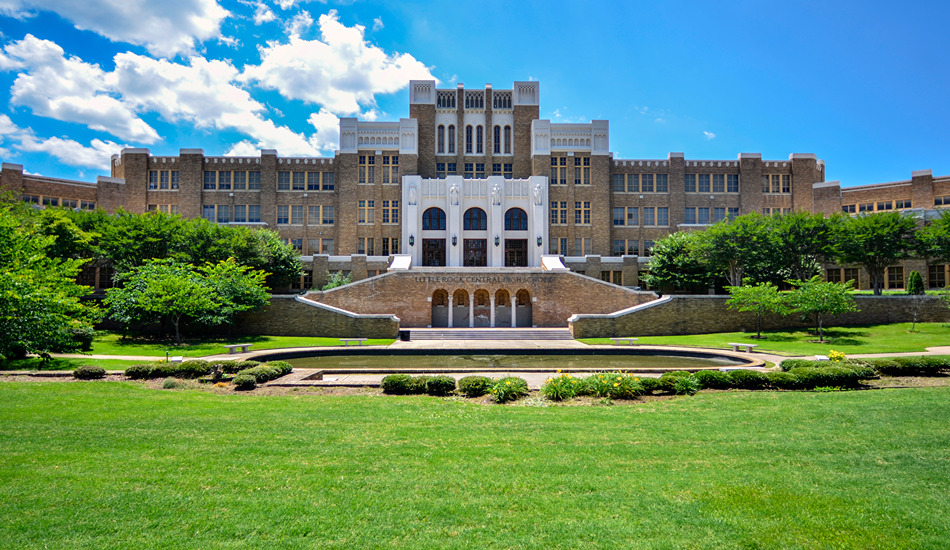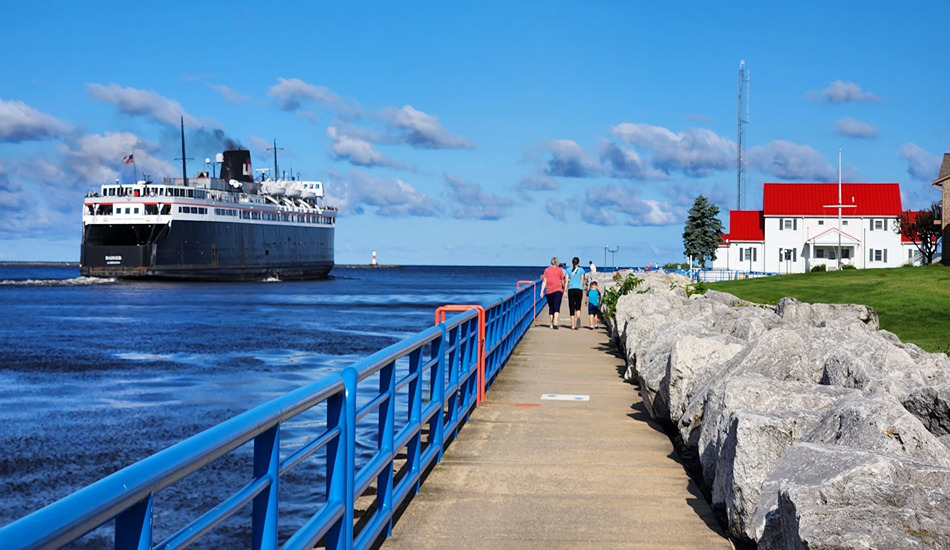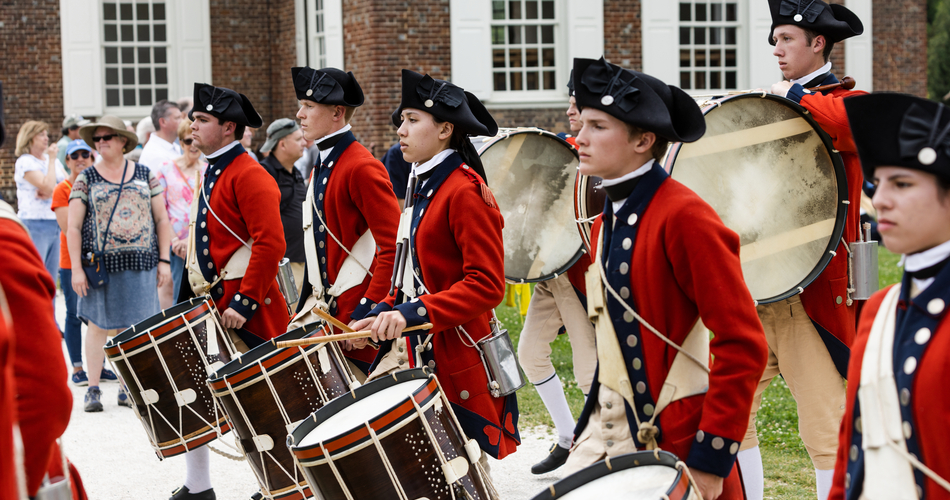The downtown area of Arkansas’ capital city claims six locations on the U.S. Civil Rights Trail, a collection of 140 hallowed places across 14 states
By Randy Mink, Senior Editor
Museums and other historic sites that enshrine important chapters in the nation’s civil rights movement are popular visitor attractions in Little Rock, Arkansas.
The six Arkansas locations on the U.S. Civil Rights Trail, all in Little Rock, spotlight key people and events in African American history.
Little Rock Central High School National Historic Site
At the only National Park Service unit that encompasses a functioning high school, ranger-led tours shed light on Little Rock’s 1957 school desegregation crisis, a drama-filled news story that commanded international attention. On orders from Governor Orval E. Faubus, an opponent of racial integration, the Arkansas National Guard blocked nine black students from attending all-white Little Rock Central High School. President Eisenhower reacted by federalizing the National Guard and sending 1,200 U.S. Army troops to escort them to class.
For the entire school year, guardsmen and soldiers accompanied the students, as they had to endure threats of violence, racial slurs and being spat upon by angry white crowds outside. People yelled, “Go back to where you came from” and “Go back to Africa.” One protester’s sign proclaimed, “Race Mixing is Communism.” At the height of the conflict, both black and white journalists were beaten by the mob.
Once in the building, the nine blacks were harassed by white students, and teachers sided with the whites. The African Americans, who became known as the Little Rock Nine, were barred from sports and other extracurricular activities.
As ranger Randy Dotson told our group, “It was open season on kids who didn’t look like you.”
Following a ranger talk at the National Park Service visitor center, tour members cross the street to the school grounds and the restored gas station where reporters used the phone to call in their stories detailing the turmoil, which played out on the country’s TV screens and newspaper front pages in September of 1957.
In the Central High Commemorative Garden, memorial arches echo the school facade and symbolize triumph over intolerance. Nine trees and benches honor the students. Tours do not include access inside the school.
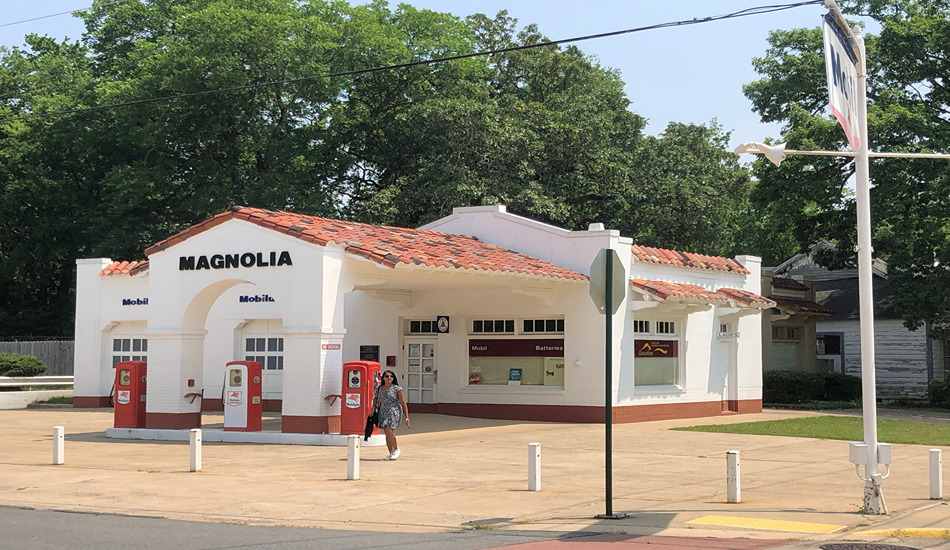
Magnolia Mobil service station, restored to its 1957 appearance, is located across the street from Little Rock Central High School. It was the nerve center for journalists reporting on the school desegregation crisis. (Randy Mink Photo)
The gleaming white Magnolia Mobil service station appears as it did in 1957, complete with signage and gas pumps from the period. It operated through the 1980s and opened as part of the historic site in 1997.
After tracing the footsteps of the Little Rock Nine, groups return to the visitor center, where a slide presentation shows what the courageous students accomplished as adults. Their occupations ranged from real estate agent and social worker to engineer and clinical psychologist. Two of the nine still live in Little Rock. Exhibits at the visitor center include archival video clips of the confrontations and interviews with the nine trailblazers.
The brave ninesome were among 200 African Americans who initially had volunteered to go to Little Rock Central High, one of the biggest and best-equipped high schools in the country, a school known for its academic excellence and superior facilities and technology. But the number of volunteers was gradually whittled down as they were disqualified for various reasons, such as grades and disciplinary issues. In some cases, black parents, terrorized or threatened with the loss of their jobs, decided against sending their children to Central High.
This was the first significant test of the U.S. Supreme Court’s 1954 Brown v. Board of Education ruling that public schools must be desegregated, a decision declaring that “separate educational facilities are inherently unequal.” It overturned the 1896 Plessy v. Ferguson case that had established the “separate but equal” doctrine. Today, more than half of Central High’s 2,500 students are black.
Dedicated in 1927, the school was originally named Little Rock Senior High School. Blending Art Deco and Gothic Revival styles, the massive building was voted “America’s Most Beautiful High School” by the American Institute of Architects. Its address: 1500 S. Little Rock Nine Way.
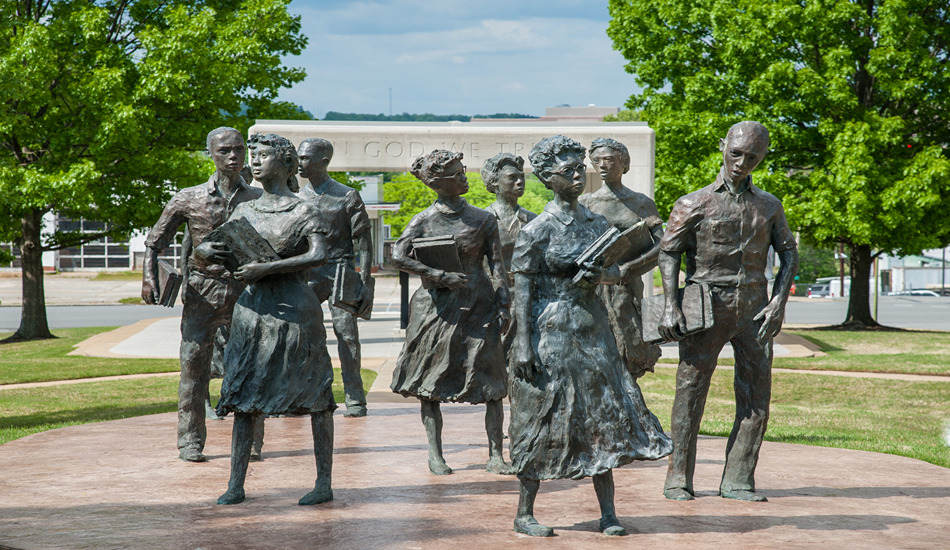
The grounds of the Arkansas State Capitol feature a monument to the Little Rock Nine. (Photo credit: Little Rock CVB)
Little Rock Nine Memorial
Located on the Arkansas State Capitol grounds, the sculpture Testament features life-size bronze statues of the Little Rock Nine and plaques bearing quotations from each. The nine are Ernest Green, Minnijean Brown, Elizabeth Eckford, Thelma Mothershed, Melba Pattillo, Gloria Ray, Terrence Roberts, Jefferson Thomas and Carlotta Walls. Except for Thomas, all are still alive. Purposefully, the figures face the governor’s office window to serve as a constant reminder to whoever holds the office to do what is morally just.
Mosaic Templars Cultural Center
This African American history museum celebrates Arkansas civil rights activists, innovators and entrepreneurs. Visitors can view artwork by black artists with an Arkansas connection, listen to firsthand accounts of life in the segregated South and learn about Little Rock’s once-thriving West Ninth Street District, now a mostly vacant commercial area. In its heyday, the six-block stretch bustled with black-owned stores, restaurants, theaters and music clubs. Construction of Interstate 630 through the neighborhood in the 1980s spelled doom for the businesses.
The museum’s permanent exhibition, as of this writing, is closed for renovation. The third floor hosts the Arkansas Black Hall of Fame.
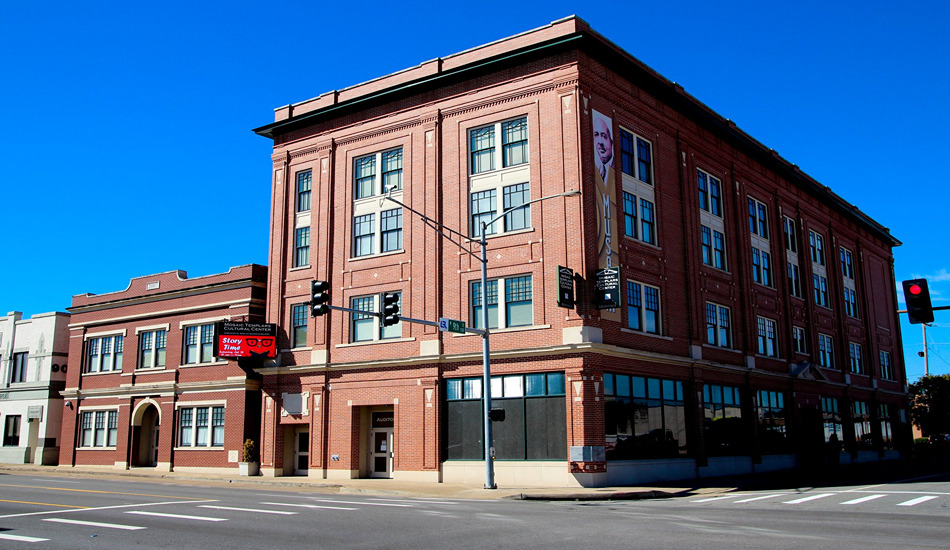
Mosaic Templars Cultural Center. (Photo credit: Photo credit: Little Rock CVB)
The museum resides in the footprint of the Mosaic Templars of America national headquarters, a prominent African American fraternal organization founded in 1882. Mosaic Templars provided illness, death and burial insurance during an era when few basic services were available to black citizens. The original 1911 building burned in 2005; the current one opened in 2008.
William J. Clinton Presidential Library & Museum
Among the permanent exhibits are those chronicling President Clinton’s efforts to promote racial reconciliation and close widening economic and social gaps. For his close relations with African Americans, he was called “our first black president” by author Toni Morrison.
During a White House ceremony in 1999, Clinton awarded a Congressional Medal of Honor to each of the Little Rock Nine. One of the medals, donated collectively to the library, is showcased in a second-floor exhibit about the nine students. Video footage shows the nine receiving their medals and a 1957 televised address by President Eisenhower. (During my visit to the library, five of the nine heroes had just entered the library for an event in their honor.)
As an 11-year-old, Clinton followed the Central High events from his home in Hot Springs and was inspired by the students’ bravery. Emblazoned in large letters across the Little Rock Nine exhibit is this 2009 quote from Clinton: “Seeing the Little Rock Nine face down the angry mob fascinated me, and inspired an emotional bond that has lasted a lifetime.”
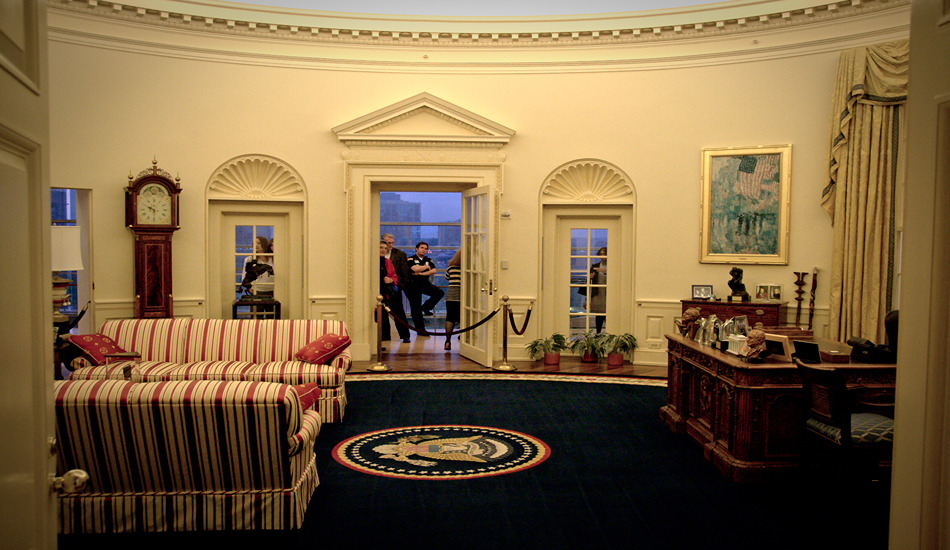
Highlights at the William J. Clinton Presidential Library and Museum include a replica of the White House’s Oval Office. (Photo credit: Little Rock CVB)
A timeline of Clinton’s eight years in office features videos of national and world events that took place during his terms. Alcoves are devoted to specific issues faced by the 42nd president, including education, drugs, crime and domestic violence. “The Impeachment Battle” chronicles the 1999 proceedings in the U.S. House and Senate. Visitors can view replicas of the White House’s Oval Office and Cabinet Room and can sit in the president’s chair at the Cabinet room table.
On display are gifts from foreign leaders, like a solid gold, jewel-encrusted sword from Saudi Arabia. Other artifacts range from the president’s 1993 Cadillac limousine and Hillary Clinton’s second inaugural gown to campaign buttons and a table setting from a White House state dinner.
For their occasional visits to Little Rock, Bill and Hillary Clinton, now residents of New York, maintain an apartment in the complex.
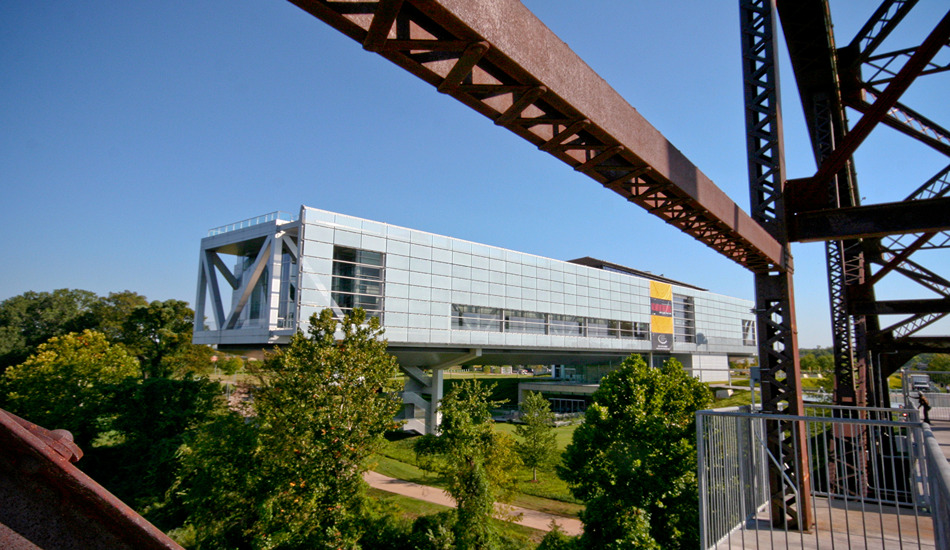
Clinton Library & Museum as viewed from the Clinton Presidential Bridge on the Arkansas River. (Photo credit: Little Rock CVB)
The library’s 42 Bar and Table, with indoor and outdoor seating, overlooks the Clinton Presidential Bridge on the Arkansas River. At night, hourly LED light shows illuminate the 1899 railroad bridge, which was converted into a pedestrian walkway in 2011.
Arkansas Civil Rights Heritage Trail
Starting at the Old State House Museum and extending eastward on Markham Street toward the Clinton Library & Museum, the trail features an ever-growing collection of sidewalk markers and medallions that recognize Arkansans who worked to secure social justice. Honorees include sit-in participants and those involved in the Central High School desegregation crisis.
One sign marks the site of a Midwest Trailways bus station where Freedom Riders from St. Louis were arrested upon their arrival on July 10, 1961. Freedom Riders were groups of white and black activists who rode interstate buses into the South to protest segregation on buses and in bus terminals.
Daisy Bates House Museum
The home of L.C. and Daisy L. Gatson Bates, civil rights activists and publishers of the local black newspaper, served as the headquarters for the Little Rock Nine during the 1957 Central High School desegregation crisis. Mrs. Bates, president of the state chapter of the NAACP, served as spokesperson for the students. She had numerous objects hurled at her home, and several fiery crosses—an emblem of the white supremacist terror organization the Ku Klux Klan—burned on her lawn. Tours are available by appointment.
For more travel ideas on Arkansas and vicinity, be sure to Subscribe to Leisure Group Travel magazine for FREE.
Lead photo – Little Rock Central High School. (Photo credit: Little Rock CVB)


